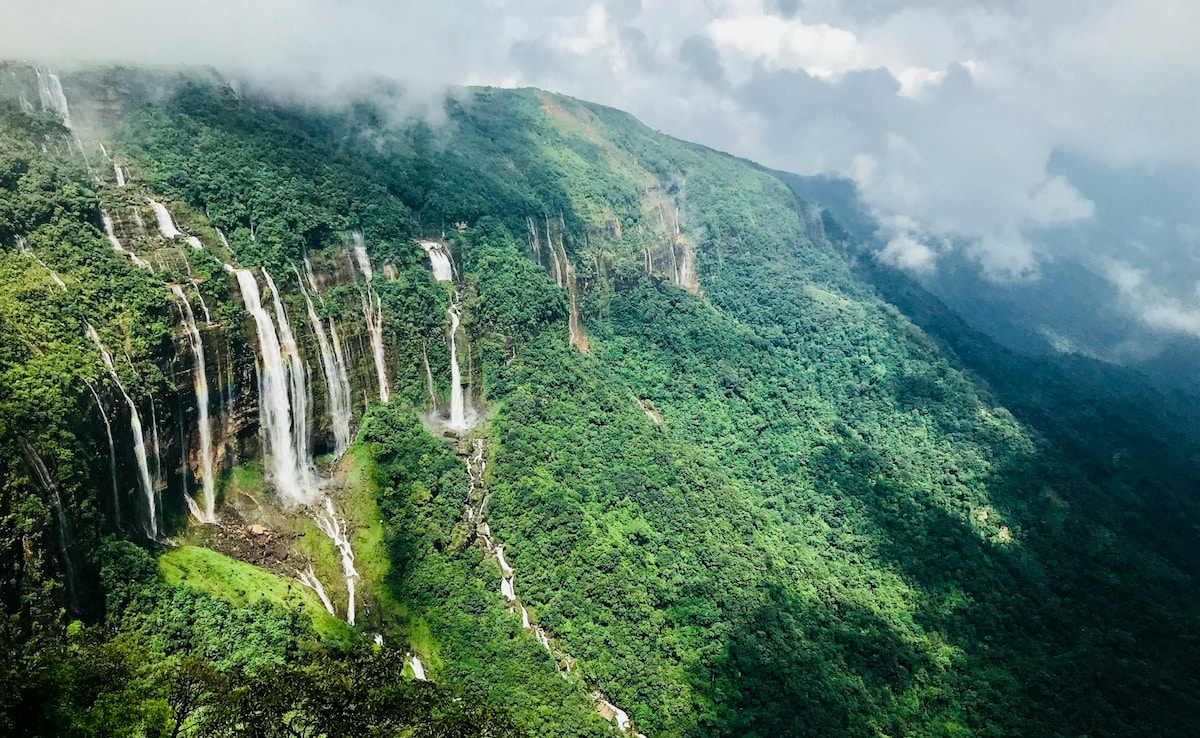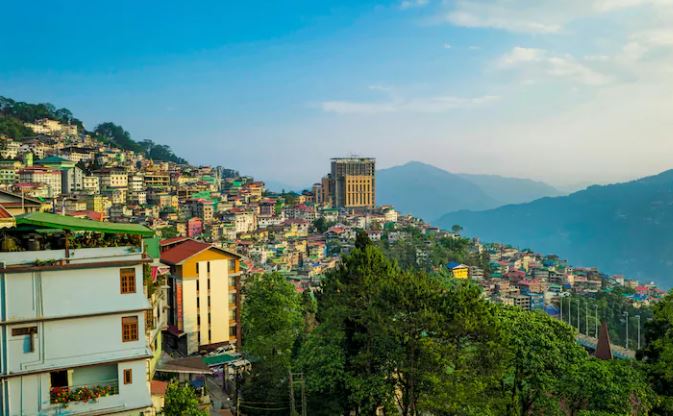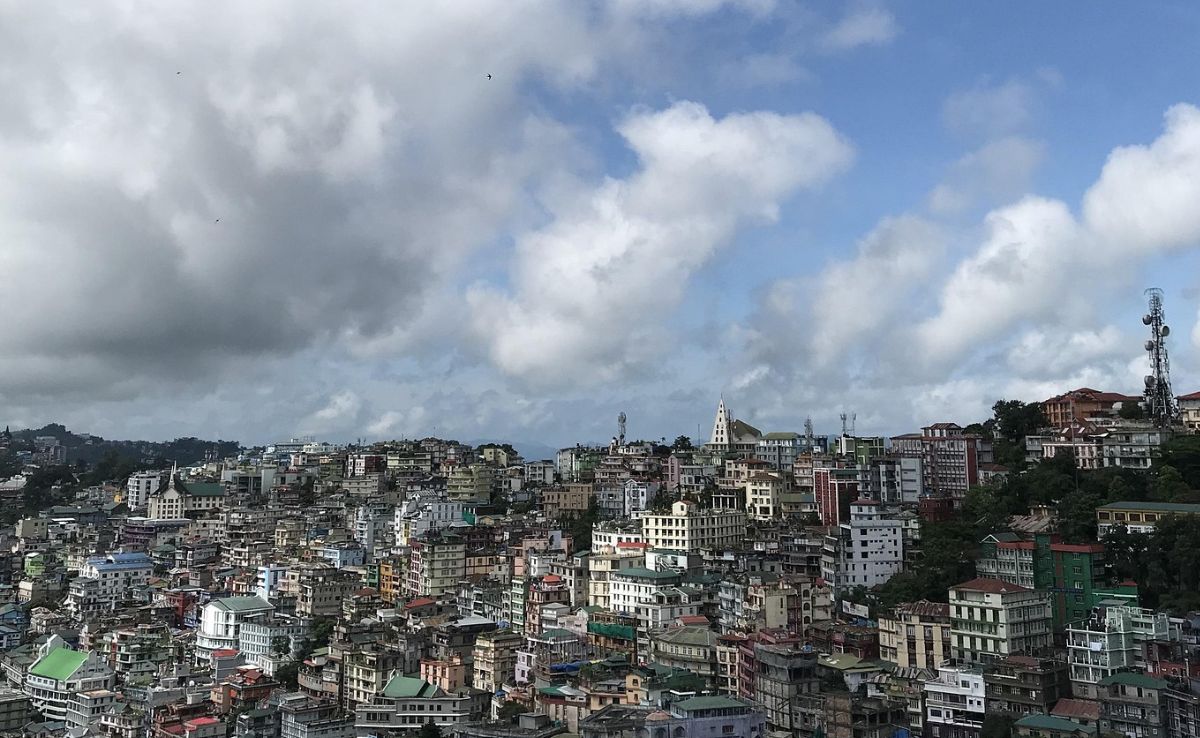
- Shillong offers excellent air quality with high elevation and dense forest cover
- Gangtok maintains clean air through strict environmental rules and green vegetation
- Aizawl benefits from elevated terrain, regulated traffic, and community cleanliness efforts
If you live in Delhi, Mumbai or any major Indian city, you already know the annual pattern. Winter approaches, pollution spikes, the AQI turns unpredictable, and even a gentle morning walk begins to feel heavy on the lungs. When breathing itself becomes a challenge, a holiday stops being a luxury. It becomes a form of relief, a necessary pause from the air quality that shapes your daily routine.
Yet not all of India struggles with polluted skies. There are still pockets of the country where the horizon remains crystal clear, the breeze feels crisp, and the landscape opens into green hills rather than grey haze. These destinations provide more than scenic views. They offer the rare comfort of clean, breathable air. For travellers who want to slow down, reset their senses and spend time in places where the air feels genuinely nourishing, these locations provide the chance to reconnect with nature in its purest form.
If you are looking for a place where the air feels light, refreshing and restorative, the following destinations are among the cleanest in India. They are ideal for travellers seeking mountain freshness, quieter days, lower congestion and environments where simply taking a deep breath feels noticeably easier.
Also Read: 7 Best Snow Destinations Across The World To Visit This Winter
How We Chose These Clean Air Destinations?
Selecting clean air destinations requires more than checking a few AQI readings. Air quality can fluctuate throughout the year, so consistency is essential. To ensure reliability, the locations below meet the following criteria:
- AQI levels that stay under 50 across regular seasonal patterns
- Minimal industrial activity within or around the region
- High Forest cover or elevated terrain that supports naturally cleaner air
- Lower levels of traffic and congestion compared to major Indian cities
- Visitor friendly infrastructure that ensures comfortable travel
5 Best Clean-Air Destinations In India For Winter Travel:
1. Shillong, Meghalaya
Average AQI: 17 to 30 (Excellent)
Shillong is often called the Scotland of the East because of its rolling hills and pine covered slopes. What travellers notice first is the clarity of the atmosphere. The town's pine lined hills, cool breeze and misty mornings create an environment that feels instantly lighter than the metros. The natural elevation and extensive forest cover give Shillong a calm, refreshing quality that is immediately noticeable.
The relaxed pace of the town, combined with its clean surroundings and widespread greenery, makes Shillong one of the most dependable clean air destinations during winter. Its environment also makes it suitable for travellers looking for quiet, moderately paced holidays.
Why Shillong Has Clean Air?
- High elevation supporting natural airflow
- Dense Forest cover that contributes to oxygen rich surroundings
- Limited industrial presence in and around the town
Top Things To Do:
- Walk around the well-maintained Ward's Lake
- Drive to Shillong Peak for panoramic views
- Visit the Don Bosco Museum to learn about the region's cultures
Best Time To Visit: October to April for dry, clear weather and consistently low pollution levels.
Also Read: 5 Experiences That Make Gulmarg India's Ultimate Winter Wonderland

Photo Credit: Unsplash
2. Gangtok, Sikkim
Average AQI: 24 to 40 (Excellent)
With its Himalayan backdrop, well maintained surroundings and firm environmental policies, Gangtok stands out as one of the cleanest state capitals in India. The town combines mountain air with scenic viewpoints and a notable absence of industrial development. Travellers often remark on the clarity of the skies and the refreshing climate, both of which reflect Sikkim's environmentally conscious governance.
The organised streets, controlled traffic and focus on conservation contribute to a setting that feels breathable, calm and nature oriented. As you move from one part of the town to another, the connection between urban space and natural landscape is consistently visible.
Why Gangtok Has Clean Air?
- No heavy industries in the vicinity
- Strict environmental regulations protecting green cover
- Dense vegetation and relatively low population density
Top Things To Do:
- Visit the striking and serene Tsomgo Lake
- Take in valley views on the Gangtok Ropeway
- Trek through Rhododendron Valley during the spring bloom
Best Time To Visit: March to June and October to December, when the weather is comfortable and visibility is excellent.

3. Aizawl, Mizoram
Average AQI: 25 to 44 (Excellent)
Aizawl is perched along high ridges and looks out across layers of misty hills. Considered one of India's cleanest capitals, it is known for its well structured layout, civic discipline and fresh hilltop winds. Unlike many urban centres, Aizawl benefits from orderly traffic systems, managed public spaces and a community driven approach to cleanliness.
This results in a city where the air feels light, the skyline stretches wide and the atmosphere supports slow, mindful travel. For visitors who appreciate peaceful surroundings with a strong sense of order, Aizawl is particularly suitable.
Why Aizawl Has Clean Air?
- Continuous natural airflow due to elevated terrain
- Light, well-regulated traffic
- Strong community participation in cleanliness initiatives
Top Things To Do:
- Browse local markets for handwoven Mizo shawls
- Take in sunset views from Durtlang Hills
- Try traditional Mizo dishes such as bamboo shoot curry
Best Time To Visit: October to March, when temperatures are pleasant and visibility remains clear.
Also Read: 7 Best Winter Destinations In India For A Trip With Friends

4. Madikeri, Karnataka
Average AQI: 40 to 50 (Good)
Madikeri sits at the heart of Coorg, a region renowned for its coffee plantations, rolling hills and cool, misty air. The fragrance of coffee blossoms blends with misty mornings, giving Madikeri a distinctive charm. Compared with many crowded hill stations, Madikeri has a calmer, more spacious layout, with plantation landscapes that contribute to cleaner air.
The region's natural beauty, supported by greenery and tranquillity, makes it a refreshing option for travellers who want clean air without travelling to remote or less accessible locations.
Why Madikeri Has Clean Air?
- Thick vegetation and coffee plantation landscapes
- Minimal industrial activity
- Elevated terrain that encourages natural ventilation
Top Things To Do:
- Watch the golden sunset at Raja's Seat
- Tour coffee estates and learn about harvesting and brewing traditions
- Trek to Abbey Falls, a popular scenic spot
Best Time To Visit: November to April for clear weather, pleasant temperatures and accessible trails.

5. Darjeeling, West Bengal
Average AQI: Around 42 (Good)
Darjeeling is known for its historic charm, tea gardens and cool mountain climate. Its altitude and abundant greenery contribute to naturally clean air that feels invigorating. Travellers will find that the weather remains pleasant through much of the year, creating the ideal setting for leisurely walks, tea tastings and heritage experiences.
Tea estates spread across the hills help maintain stable green cover. Combined with moderate traffic and cooler temperatures, these elements allow Darjeeling to retain good air quality throughout the travel season.
Why Darjeeling Has Clean Air?
- High altitude and naturally cooler climate
- Extensive tea estates providing consistent green cover
- Moderate traffic compared to major cities
Top Things To Do:
- Watch sunrise at Tiger Hill
- Sip classic Darjeeling tea at Glenary's
- Ride the UNESCO listed Darjeeling Himalayan Railway
Best Time To Visit: October to April, when skies remain clearer and conditions are ideal for sightseeing.
Also Read: Beach Or Hill Station This Winter? Travellers Are Divided - Here Is What Most Prefer

Photo Credit: Unsplash
Bonus Clean Air Destinations Worth Considering:
- Pelling, Sikkim: Clear views of Kanchenjunga and consistently fresh Himalayan air.
- Ziro Valley, Arunachal Pradesh: Pine forests, rice fields and peaceful surroundings suitable for slow travel.
- Ponmudi, Kerala: Misty hilltops and green valleys located near Thiruvananthapuram.
Clean Air Travel Tips:
A few simple habits can make your clean air holiday more comfortable and environmentally responsible.
1. Check Live AQI: Use trusted apps such as AQI India to plan day trips during hours of peak clarity.
2. Pack Smart
- Light layers for hill weather
- A jacket or windcheater
- Comfortable walking shoes
- Reusable bottles and eco-friendly toiletries
3. Travel Sustainably
- Avoid single use plastic
- Support homestays and small local businesses
- Follow marked trails and avoid disturbing natural habitats
Also Read: 5 Best Indian Destinations That Are Waiting For Your Winter Holidays
The Bottom Line:
At a time when pollution shapes daily life in many cities, India's clean air destinations offer a rare and necessary reprieve. These places show what nature feels like when it is protected, with lighter air, clearer skies and calmer surroundings. They encourage slower travel and deeper rest, allowing visitors to breathe more freely and reconnect with environments that feel truly refreshing.
If you are craving a break that feels restorative from the moment you arrive, this is the ideal season to plan a clean air getaway. Choose a destination, pack your bags and enjoy the simple luxury of fresh, revitalising mountain air.
Track Latest News Live on NDTV.com and get news updates from India and around the world

